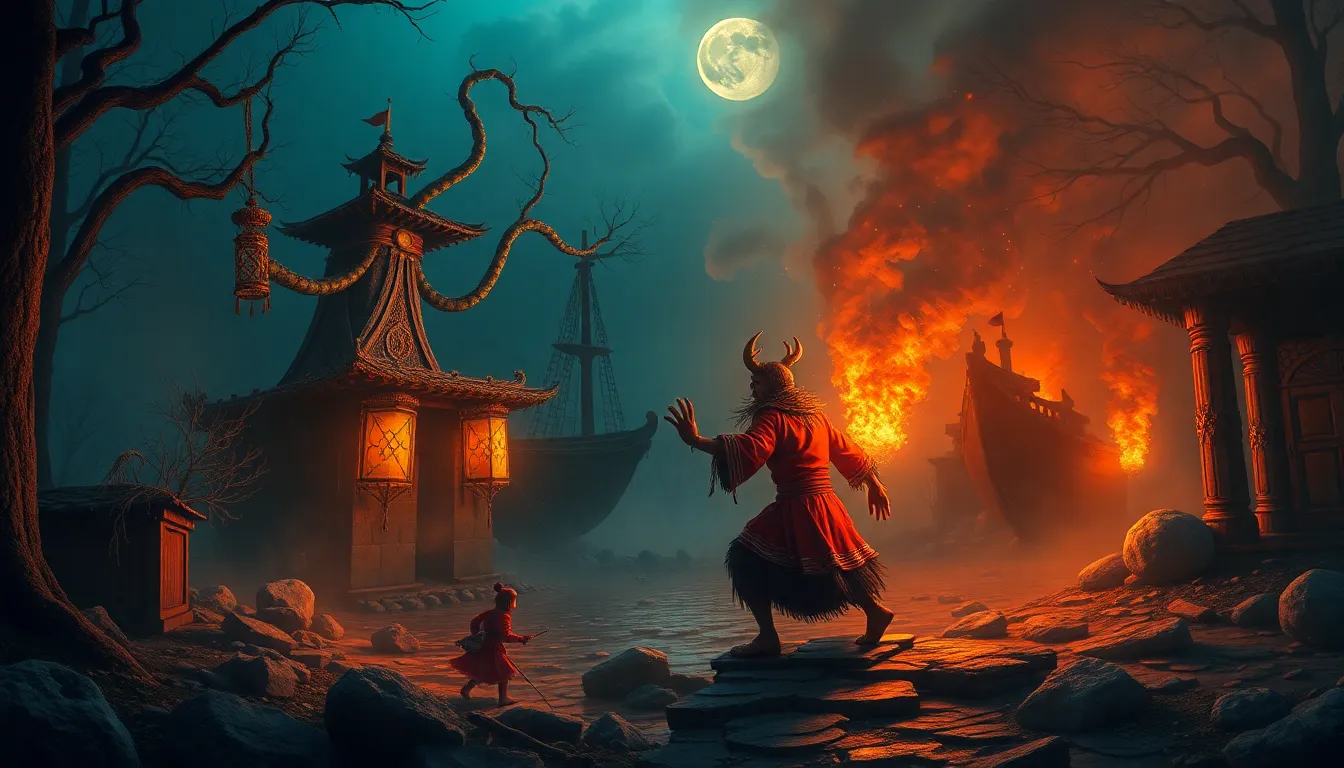The Most Ingenious Trickster Tales from Around the Globe
I. Introduction
Trickster tales are stories that feature clever, mischievous characters who use their wits to navigate challenges and often outsmart those in power. These tales serve not only as entertainment but also as vehicles for moral and social commentary.
Trickster figures hold a vital place in folklore across cultures, embodying the complexities of human nature, including intelligence, cunning, and the ability to defy norms. This article aims to explore various trickster tales from around the world, uncovering their significance and the universal themes they convey.
II. The Archetype of the Trickster
Tricksters are characterized by their nonconformity, intelligence, and playful nature. They often blur the lines between good and evil, challenging authority and societal norms. Common characteristics include:
- Cunning and cleverness
- A tendency to deceive or manipulate
- A playful or humorous demeanor
- Fluidity in gender and identity
Trickster tales often revolve around themes of:
- Deception and trickery
- Justice and retribution
- The struggle against oppression
- Transformation and change
The role of the trickster varies across cultures, but they often serve as catalysts for change, revealing societal flaws and prompting reflection within their communities.
III. North American Trickster Tales
North American trickster tales, particularly those from Native American traditions, prominently feature the Coyote. Known for its cunning and chaotic nature, the Coyote embodies the duality of wisdom and foolishness.
Another notable figure is Br’er Rabbit, who uses his intelligence to outsmart larger and stronger foes, often delivering important moral lessons. These tales reveal themes of resilience, cleverness, and the importance of community.
In analyzing these stories, we see that they often impart moral lessons about:
- Respect for nature
- The importance of cleverness over brute strength
- Understanding the consequences of one’s actions
IV. African Trickster Tales
Anansi the Spider, a beloved figure in Ghanaian folklore, is celebrated for his cleverness and storytelling ability. Through his adventures, Anansi often teaches valuable lessons about wisdom and the complexities of human nature.
The tale of The Tortoise and the Hare is another significant African fable, where the slow, methodical tortoise outsmarts the overconfident hare. This emphasizes the importance of perseverance and humility.
Community and wisdom play crucial roles in African trickster tales, often reflecting societal values and the importance of collective knowledge and experiences.
V. European Trickster Legends
In European folklore, Reynard the Fox is a prominent trickster known for his cunning and ability to outwit other animals. His stories often reflect societal hierarchies and the tensions between different classes.
Till Eulenspiegel, a German jester, uses his wit to mock the elite, highlighting the absurdities of social conventions. His tales reveal the impact of societal norms on the narratives surrounding tricksters in Europe.
VI. Asian Trickster Figures
The Monkey King from the Chinese classic “Journey to the West” is a quintessential trickster figure, known for his incredible strength, intelligence, and penchant for mischief. He embodies the struggle for enlightenment and the journey to self-discovery.
In Japan, the tanuki, or raccoon dog, is celebrated for its cleverness and shapeshifting abilities, often playing tricks on humans. These stories reflect cultural values surrounding nature and the supernatural.
VII. South American Trickster Tales
The “Pájaro Carpintero” (Woodpecker) is a notable figure in indigenous South American lore, often depicted as a clever character that uses its ingenuity to navigate various challenges.
In Andean mythology, the “Trickster God” represents the chaotic forces of nature and human existence, often teaching important lessons about balance and community.
Contemporary South American storytelling continues to explore trickster themes, reflecting modern societal issues through the lens of traditional narratives.
VIII. The Role of Gender in Trickster Stories
While many trickster tales feature male characters, female tricksters also play significant roles across cultures. Examples include:
- La Llorona in Mexican folklore
- Brigid, the Irish goddess of fertility and healing
- The clever women in various African folktales
These stories often challenge traditional gender roles, showcasing female characters who wield power through intelligence and cunning, thus highlighting the interplay of gender and power dynamics in trickster narratives.
IX. The Evolution of Trickster Tales in Modern Media
Trickster tales have evolved and adapted in modern literature, film, and television. Contemporary adaptations often reflect current societal issues, making these ancient stories relevant in today’s context.
Globalization has played a significant role in the dissemination of trickster tales, allowing them to cross cultural boundaries and influence new audiences. The universal appeal of trickster themes, such as rebellion against authority and the triumph of wit over strength, continues to resonate in contemporary society.
X. Conclusion
In summary, trickster tales are a rich and diverse aspect of folklore that transcend cultural boundaries. They provide insight into human nature, societal norms, and the importance of cleverness and resilience. The enduring popularity of tricksters in various narratives speaks to their universal appeal, reflecting our ongoing fascination with the complexities of life and the power of wit.



